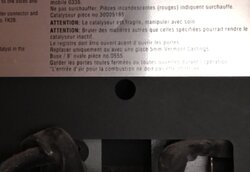How is the air-sealing and insulation in the cottage? Is it shielded from the wind by trees? Open floor plan where heat will move easily?
I've run four different stoves, and the output numbers from the EPA tests seem to correspond to what I found in real life. I can't say if they are accurate for
all of the stoves on the list, though. They show a high-output number of 27600 BTU/hr, similar to what my weakest stove is (Dutchwest 2460.) It was doing a fair job heating our place with the optional blower on the stove, but it was a struggle in cold, windy conditions. This was with med-high to high output wood (Red Oak up to Black Locust.) We are heating a 1000 sq.ft. log cabin, rather leaky with no wall insulation, but the climate here is much milder than in Ontario. I'm just guessing at this point but my feeling is that you may need more output unless your cottage is pretty tight.
These output numbers won't tell you area heated, but I think they are probably useful for comparing different stoves.
https://www.epa.gov/compliance/list-epa-certified-wood-stoves


